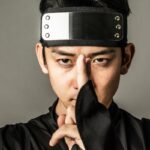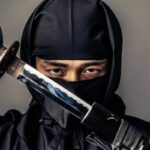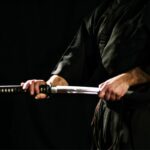As silent spies and assassins who specialized in stealth, ninjas emerged alongside the samurai in the days of feudal Japan. While the samurai were nobles who ruled Japan in the Emperor’s name, ninjas tended to come from the lower classes.
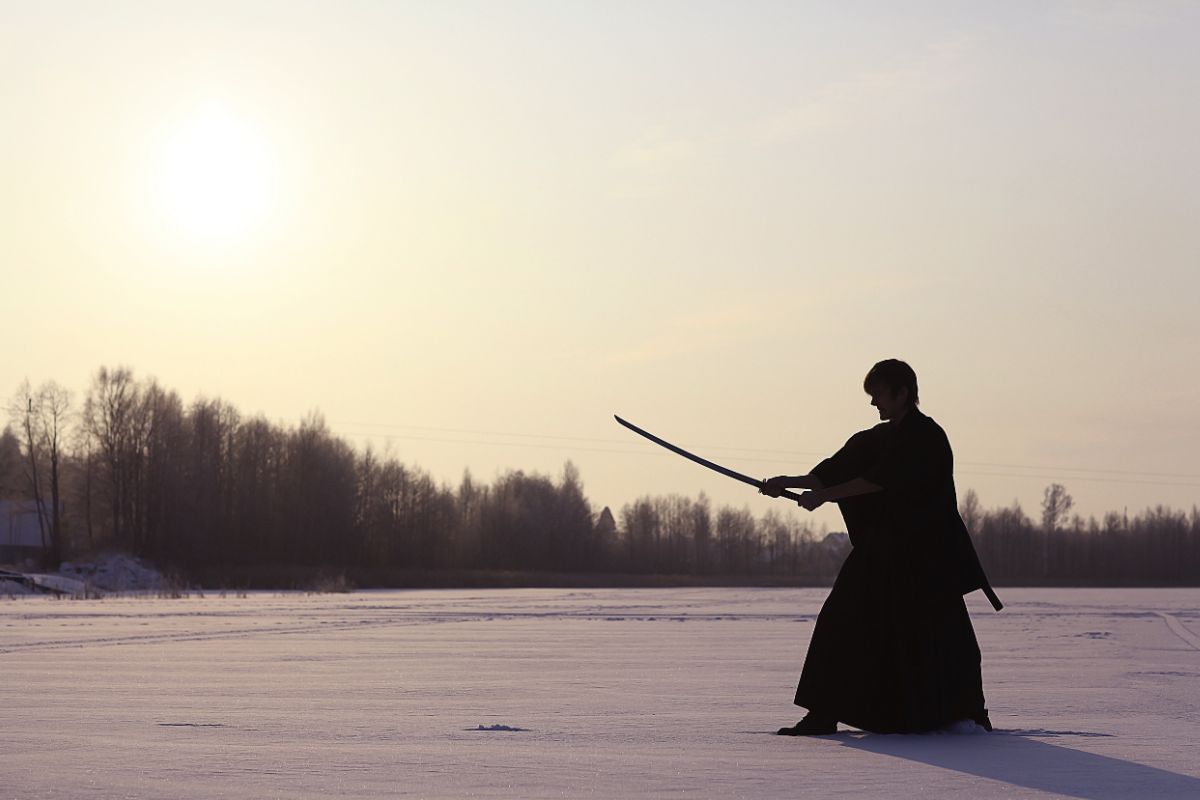
As ninjas were secretive, a lot of their names have been forgotten in the annals of history. However, several ninjas have been remembered and carried a historical record.
In this guide, we will look at the six most famous ninjas in feudal Japan. This will include the likes of Hattori Hanzo, Mochizuki Chiyome, Fuma Kotaro, Fujibayashi Nagato, Ishikawa Goemon, and Momochi Sandayu.
Hattori Hanzo
Possibly the greatest ninja of them all was Hattori Hanzo. His family was from Iga where not a single samurai clan dominated.
He began his training at the age of eight and emerged as a skilled spikeman, using a spear that extended further than four meters.
When he was 20 years old, his legend began to form as he performed a rescue mission for the daughters of Tokugawa Ieyasu.
Not only were the daughters saved from the Kaminogo castle, Hattori also helped capture several members of the Imagawa clan, high-ranking members too.
He also defended his hometown of Iga by commanding a few men and then secured a victory over the son of Oda Nobunaga.
His most renowned deed was saving the life of Tokugawa Ieyasu when he was being chased by Akechi Mitsuhide following the death of Oda Nabunaga during 1582.
Ieyasu went on to found the Tokugawa Shogunate and Hattori also aided the recovery of Ieyasu’s family who were being held captive by a rival clan.
The legend of Hattori lives on as his image can be seen in movies and manga, occasionally wielding magical powers.
Mochizuki Chiyome
There are some ninjas who are known for their own exploits, Mochizuki Chiyome was known for her training. She was the wife of a samurai in the Shinano domain; Mochizuki Nobumasa, who died in 1575 in the Battle of Nagashino.
Chiyome stuck to her ninja roots and remained with her husband’s uncle, Takeda Shingen, who was a Shinano daimyo.
This is where Mochizuki Chiyome’s story truly begins as she was asked by Takeda to form a band of female ninja operatives. The kunoichi would act as messengers, spies, and assassins so Chiyome brought in girls.
Many of them needed a change in their lives as they were refugees, orphans, or prostitutes. Each of them were trained as ninjas and would disguise themselves as Shinto shamans when they moved.
Few suspected the kunoichi and they found success as ninjas. Occasionally, they would dress up to become prostitutes, as well as actresses or geisha.
In their disguises, they infiltrated castles and temples to locate their targets. At its largest, the band of ninjas had between 200 and 300 in its ranks to provide the Takeda clan with a noted advantage.
Fuma Kotaro
As an army leader and a leader of ninjas, Fuma Kotaro belonged to the Hojo clan in Sagami Provence. His ninjas would use guerilla tactics with espionage to combat the Takeda clan.
Eventually, his clan was defeated by Toyotomi Hideyoshi following the siege of Odawara Castle so Kotaro and his ninjas reverted to banditry.
Most impressively, Kotaro is said to have caused Hattori Hanzo’s death by luring him into a seaway then pouring oil into the water and burning his boats.
Fujibayashi Nagato
As a leader of the Iga ninjas, Fujibayashi Nagato led his followers during the 16th century. He tended to serve the daimyo of the Oomi domain during his conflicts versus Oda Nabunaga.
As Fujibayashi continued to gain support, Nobunaga decided to invade Koga and Iga in an effort to stamp out every ninja clan. Instead of being wiped out, several clans went into hiding to look after their culture.
That was not good enough for Fujibayashi and his family, who made the preservation of ninja lore and their techniques a priority.
In ensuring that the way of the ninja persisted, the Ninja Encyclopedia (the Bansenshukai) was compiled by his descendant, Fujibayashi Yastake.
Ishikawa Goemon
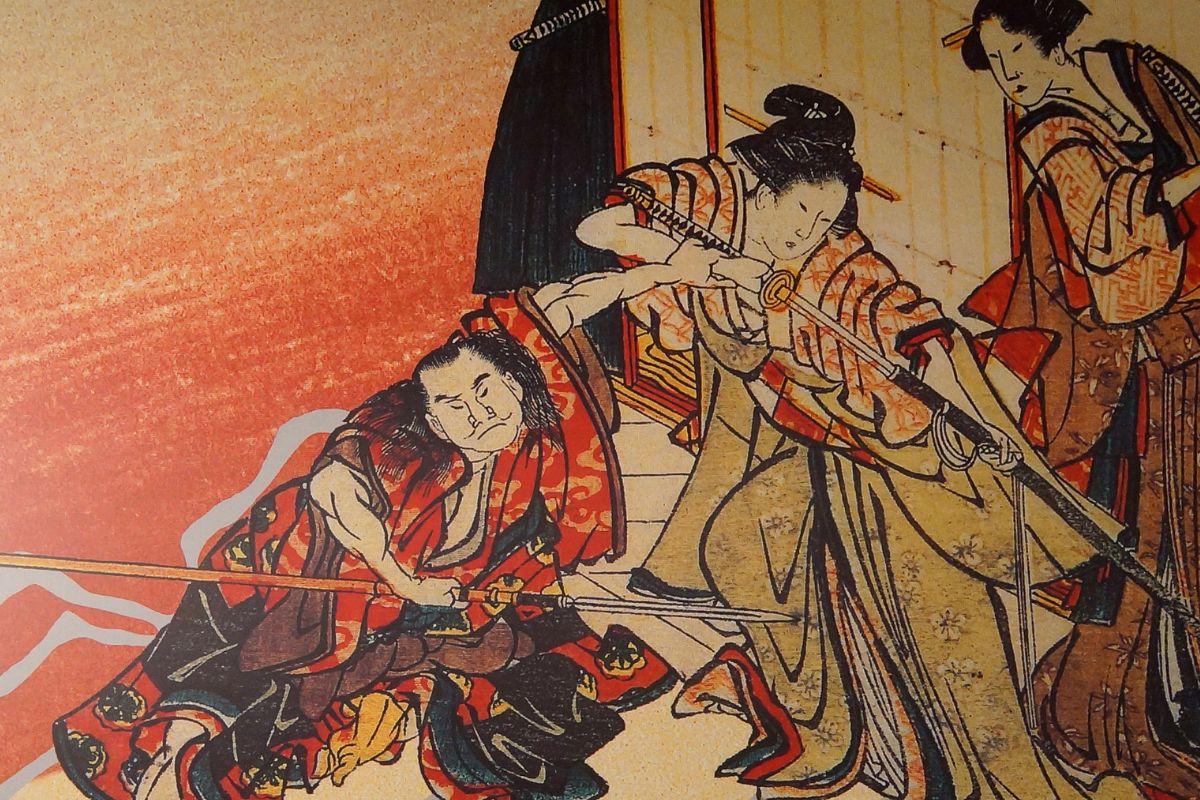
As agents of stealth from the lower classes, a lot of ninjas sound like Robin Hood. That’s certainly the case for Ishikawa Goemon who was originally a thief from a samurai family who then served the Miyoshi clan belonging to Iga.
He eventually trained as a ninja from the teachings of Momochi Sandayu (more about him later).
There are two stories as to what Momochi was said to have done following Nobunaga’s invasion. The first is that he simply fled but a more exciting version of the story is that he had an affair with Momochi’s mistress.
In fleeing, Goemon was also said to have stolen Momochi’s preferred sword on his way out.
He lived out his days as a runaway, robbing to fund his movements. Whether that was wealthy merchants, daimyo, or rich temples.
It’s not entirely known if he acted like a true Robin Hood to help the impoverished but he did try to assassinate Toyotomi Hideyoshi in 1594.
Goemon was eventually executed in a traumatic way, boiled alive in a cauldron at Kyoto’s Nanzenji Temple.
Momochi Sandayu
As the leader of the Iga ninjas into the latter half of the 16th century, it was Momochi Sandayu’s death that presented his legend.
He was thought to have died when Oda Nobunaga invaded Iga yet it looks like he escaped to live out his final days in Kii Province.
That a ninja could go from a life of assassinations and stealth to becoming a farmer seems far-fetched yet his legacy lived on.
Momochi’s pastoral existence was a nice way to end his days yet he was well-known for what he left behind. His teachings led many to believe that the ninjutsu should solely be used as a last resort.
If they are to be used, that should be to save a ninja’s life. That meant that the ninjutsu was used sparingly and specifically, though they could be used to serve the lord of a ninja or help their domain.
Final Thoughts
Many of the most famous ninjas in feudal Japan became more well-known following their death. Whether this was through their stories which were passed down and embellished or due to their legacy.
That the ways of the ninja were preserved from those days is an achievement in itself as they could have easily been lost.
Frequently Asked Questions
Hattori Hanzo is likely to be the most famous ninja as his image lives on into the modern day. He was known for his early training and his strategic thinking.
In his latter days, he built a Buddhist temple and became a monk. He even changed his name to ‘sainen’ and his grave remains in the Sainen-Ji temple which still operates to this day.
The jōnin is the highest rank of ninja and translates to ‘upper person’. They tended to hire out mercenaries and represented the whole group.
- 16 Best Websites To Watch Japanese Movies With English Subtitles - May 11, 2023
- Is ZIPAIR The Best Airline For Traveling To Japan? - May 11, 2023
- Ryu Murakami Vs Haruki Murakami – Which One Should You Read? - May 11, 2023


